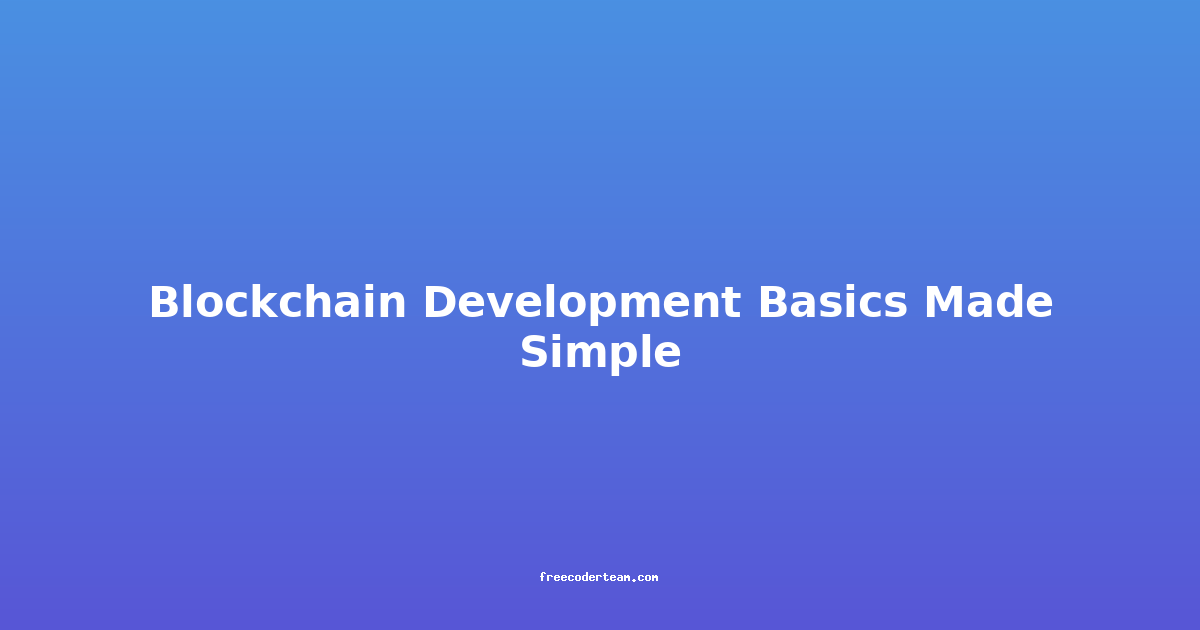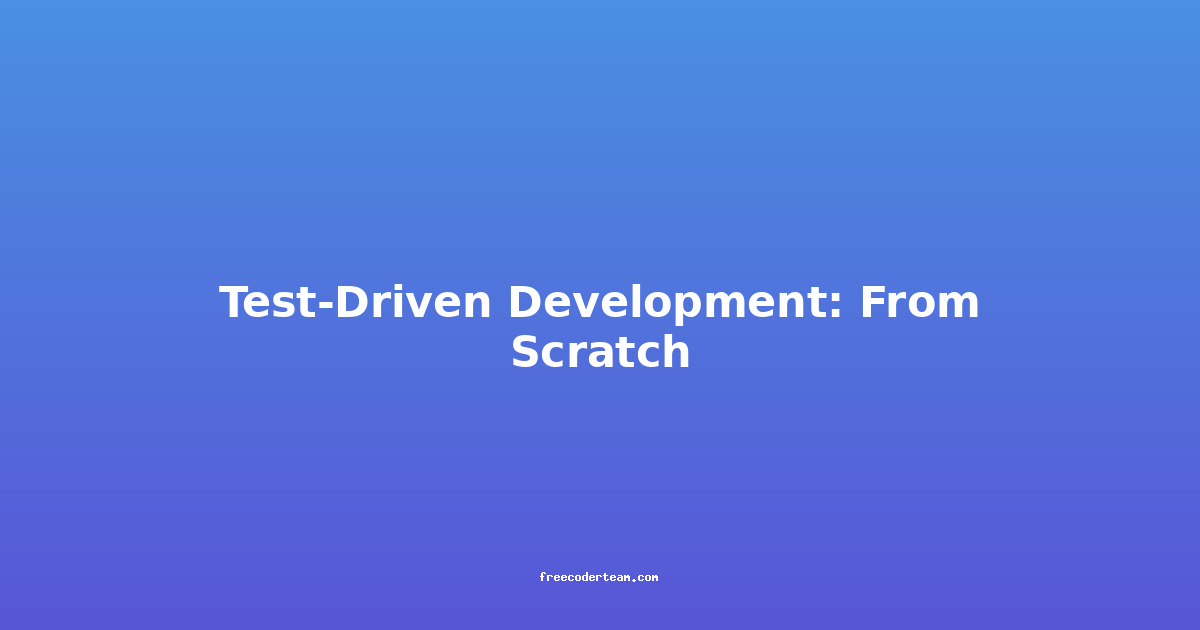Advanced Test-Driven Development (TDD): A Comprehensive Guide
Test-Driven Development (TDD) is a software development approach that emphasizes writing tests before writing the actual code. This practice ensures that the code is not only functional but also maintainable and robust. While TDD is often introduced as a foundational concept, its advanced practices can significantly enhance the efficiency and quality of software development. In this blog post, we will explore the nuances of advanced TDD, including best practices, practical examples, and actionable insights.
Table of Contents
- Introduction to TDD
- Key Principles of TDD
- Advanced TDD Practices
- Practical Example: Implementing TDD in a Simple Calculator
- Best Practices for Advanced TDD
- Conclusion
Introduction to TDD
TDD is a cyclic approach where developers write tests for the desired functionality before writing the actual implementation. This process ensures that the code is tested from the outset and helps catch bugs early. TDD is not just about writing tests; it is a mindset that encourages developers to think critically about the behavior and requirements of the system.
Key Principles of TDD
- Test First: Write tests before writing the actual code. This ensures that the code is designed with testability in mind.
- Incremental Development: Work in small, incremental steps. Write a test, make it fail, write the code to make it pass, and then refactor.
- Refactoring: Continuously improve the codebase without altering its behavior. This ensures maintainability and scalability.
Advanced TDD Practices
1. Red, Green, Refactor
The "Red, Green, Refactor" cycle is the heart of TDD:
- Red: Write a test that fails (because the functionality doesn't exist yet).
- Green: Write the minimal code required to make the test pass.
- Refactor: Improve the code's structure without changing its behavior.
Example in Python
Suppose we are building a function to calculate the factorial of a number.
# Step 1: Write a failing test (Red)
def test_factorial():
# Assert that factorial of 5 is 120
assert factorial(5) == 120
# Step 2: Write minimal code to pass the test (Green)
def factorial(n):
return 120 # Temporary implementation to make the test pass
# Step 3: Refactor
def factorial(n):
if n == 0:
return 1
return n * factorial(n - 1)
2. Isolation and Mocking
In complex systems, dependencies (like databases, APIs, or external services) can make testing difficult. Mocking allows you to isolate the unit under test by replacing these dependencies with mock objects.
Example Using Python's unittest.mock
from unittest.mock import MagicMock
import requests
# Original function that depends on an external API
def get_weather(city):
response = requests.get(f"http://api.weather.com/{city}")
return response.json()
# Test using mocking
def test_get_weather():
mock_response = MagicMock()
mock_response.json.return_value = {"city": "New York", "temperature": 72}
mock_requests = MagicMock()
mock_requests.get.return_value = mock_response
# Patch the external dependency
with patch("requests.get", mock_requests):
result = get_weather("New York")
assert result == {"city": "New York", "temperature": 72}
3. Behavior-Driven Development (BDD)
BDD is an extension of TDD that focuses on describing software behavior in a way that is understandable by non-technical stakeholders. Tools like Cucumber and Behave allow developers to write tests in a natural language-like format.
Example Using Behave
Feature File (calculator.feature):
Feature: Calculator
Scenario: Add two numbers
Given the numbers 5 and 3
When I add them
Then the result should be 8
Step Definitions (steps.py):
from behave import given, when, then
from calculator import add
@given('the numbers {num1} and {num2}')
def step_given_numbers(context, num1, num2):
context.num1 = int(num1)
context.num2 = int(num2)
@when('I add them')
def step_when_add(context):
context.result = add(context.num1, context.num2)
@then('the result should be {expected}')
def step_then_result(context, expected):
assert context.result == int(expected)
4. Test Coverage and Quality Metrics
Test coverage is a metric that measures the percentage of code executed by tests. While high coverage is desirable, it is not the only indicator of test quality. Focus on testing critical and complex parts of the code.
Using Python's coverage Module
# Install the coverage module
pip install coverage
# Run tests with coverage
coverage run -m unittest tests.py
# Generate a report
coverage report
Practical Example: Implementing TDD in a Simple Calculator
Let's implement a simple calculator using TDD. We'll write tests first and then implement the logic.
Step 1: Write the Test
# tests/test_calculator.py
import unittest
from calculator import Calculator
class TestCalculator(unittest.TestCase):
def test_add(self):
calculator = Calculator()
result = calculator.add(5, 3)
self.assertEqual(result, 8)
def test_subtract(self):
calculator = Calculator()
result = calculator.subtract(10, 4)
self.assertEqual(result, 6)
def test_multiply(self):
calculator = calculator()
result = calculator.multiply(7, 2)
self.assertEqual(result, 14)
def test_divide(self):
calculator = Calculator()
result = calculator.divide(10, 2)
self.assertEqual(result, 5)
if __name__ == '__main__':
unittest.main()
Step 2: Implement the Code
# calculator.py
class Calculator:
def add(self, a, b):
return a + b
def subtract(self, a, b):
return a - b
def multiply(self, a, b):
return a * b
def divide(self, a, b):
if b == 0:
raise ValueError("Cannot divide by zero")
return a / b
Step 3: Refactor
After implementing the basic functionality, refactor the code to improve readability and maintainability. For example, you might extract common logic or use more Pythonic patterns.
Best Practices for Advanced TDD
- Focus on Behavior: Write tests that describe the expected behavior rather than the implementation details.
- Keep Tests Independent: Each test should be isolated and not dependent on the order of execution.
- Use Mocks Thoughtfully: Mock only what is necessary to isolate the unit under test. Overuse of mocks can obscure real dependencies.
- Automate Test Runs: Use continuous integration (CI) tools to automate test execution and ensure code quality.
- Prioritize Test Coverage: Aim for high coverage, but focus on testing critical and complex parts of the system.
Conclusion
Advanced TDD is more than just writing tests before code; it is a mindset that emphasizes clarity, maintainability, and quality. By following practices like "Red, Green, Refactor," isolation with mocks, and behavior-driven development, developers can build robust and reliable systems. Additionally, leveraging tools and metrics like test coverage ensures that the testing effort is effective and measurable.
By adopting these advanced TDD practices, developers can not only improve the quality of their code but also streamline the development process, leading to more efficient and maintainable software.
Feel free to integrate these concepts into your development workflow and see the benefits firsthand! If you have any questions or need further clarification, feel free to reach out. Happy coding! 🚀




